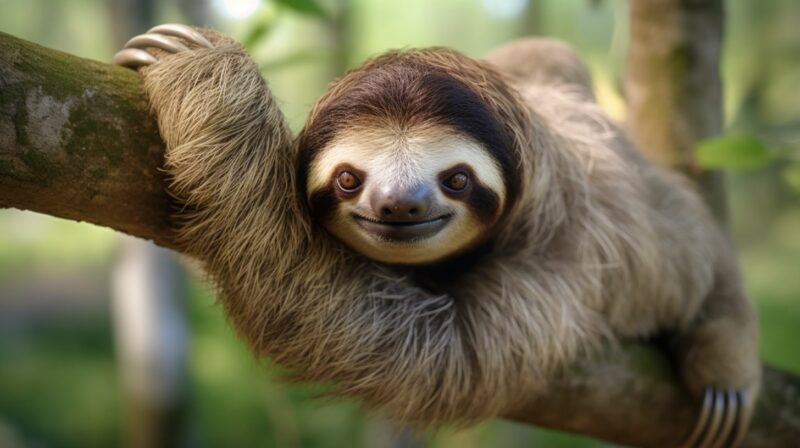Panama, the small Central American nation, is home to a stretch of land that bridges two colossal continents – North and South America. And with its jungles, mountains, and coasts, Panama is a hotspot for biodiversity. Today, we’re talking about the heart of its wildlife to showcase 14 of the most common animals you can spot in this lush paradise.
1. Mantled Howler Monkey
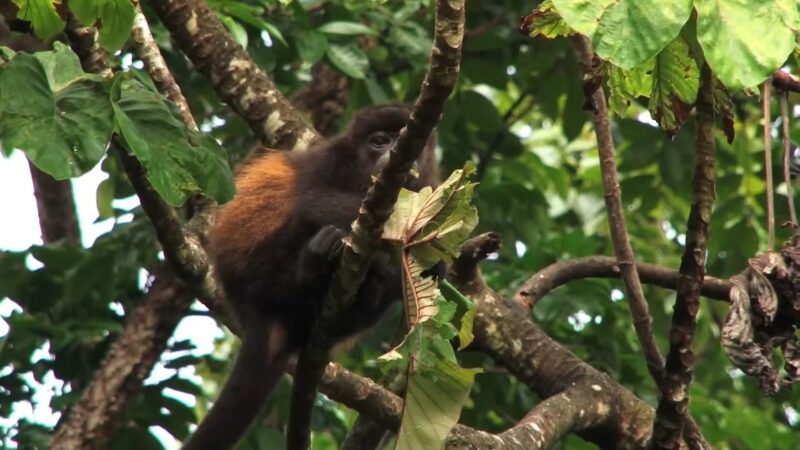
One of the first sounds that will greet you in the Panamanian rainforest is the deep, throaty howl of the Mantled Howler Monkey. As one of the largest monkeys in the Americas, they’re surprisingly easy to spot!
Habitat & Behavior
Living high in the rainforest canopy, these primates are predominantly herbivores, munching mainly on leaves. Their howls, while intimidating, serve as a way to communicate territory boundaries and presence to potential rivals.
Quick Features
- Color: Black with a fringe of golden guard hairs.
- Diet: Primarily leaves, but also fruits, flowers, and nuts.
- Size: Up to 22 inches (56 cm) in length, not including their long tails.
2. White-nosed Coati
A member of the raccoon family, the White-nosed Coati is a curious and adaptable creature often seen foraging on the forest floor.
Habitat & Behavior
Roaming both the ground and trees, they’re omnivorous, with a diet ranging from fruits to small vertebrates. They have a fascinating social structure, with females and young males forming bands, while older males are generally solitary.
Quick Features
- Color: Brownish-red with a white snout.
- Diet: Omnivorous – fruits, insects, and small animals.
- Habit: Diurnal, most active during the day.
3. Panamanian White-faced Capuchin
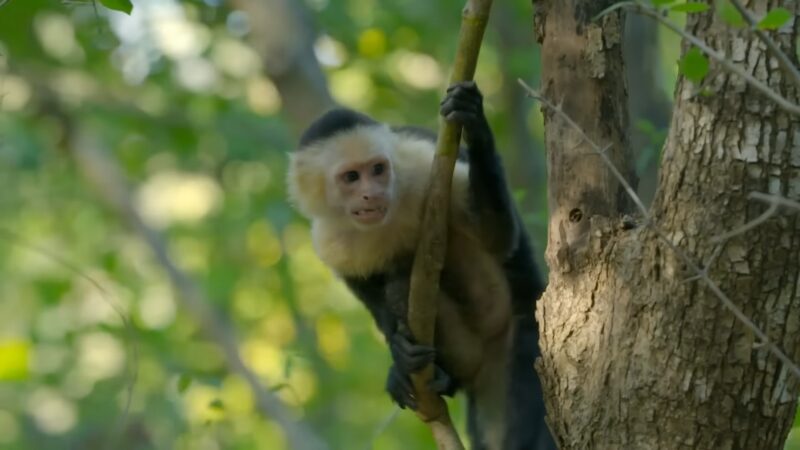
Recognizable by its contrasting black body and white face, the White-faced Capuchin is a highly intelligent and agile monkey native to Panama.
Habitat & Behavior
Capuchins are known for their tool-using skills, and in Panama, they can be seen cracking open nuts with rocks or using sticks to extract insects. Social and lively, they form groups with intricate hierarchies.
Quick Features
- Color: Black body with a distinctive white face.
- Diet: Fruits, nuts, insects, and sometimes small vertebrates.
- Habit: Diurnal, very active during the daytime.
4. Three-toed Sloth
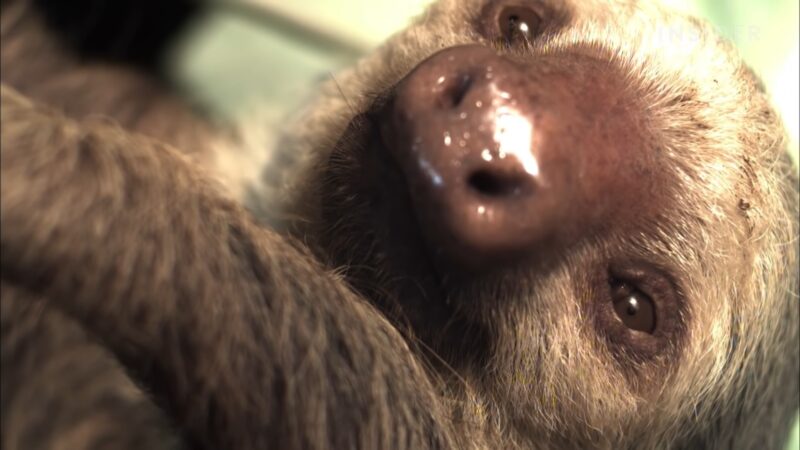
The iconic slow mover of the rainforest, the Three-toed Sloth, is an endearing creature that embodies the tranquil pace of tropical life.
Habitat & Behavior
Preferring the treetops, these sloths are perfectly adapted to a life upside down. Their slow metabolism means they don’t have to eat as often, making their lethargic lifestyle efficient!
Quick Features
- Color: Grayish-brown with a distinctive face mask.
- Diet: Leaves, shoots, and fruits.
- Speed: Infamously slow, moving at 0.24 kilometers per hour!
5. Keel-billed Toucan
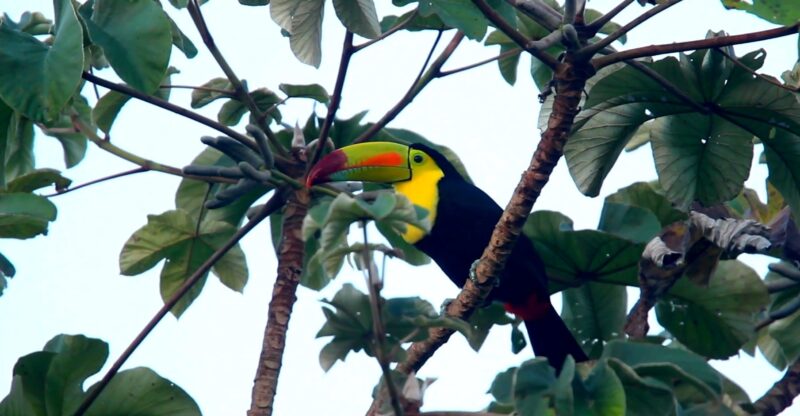
With its oversized, colorful bill, the Keel-billed Toucan is a sight to behold and a favorite among birdwatchers in Panama.
Habitat & Behavior
Inhabiting the canopy layers, they’re known for their noisy calls and fruit-eating habits. These toucans play a vital role in forest ecology as they disperse seeds.
Quick Features
- Color: Black body with a multicolored bill (yellow, green, red, and orange).
- Diet: Primarily fruits, but occasionally feeds on insects and lizards.
- Call: A frog-like croak.
6. Harpy Eagle
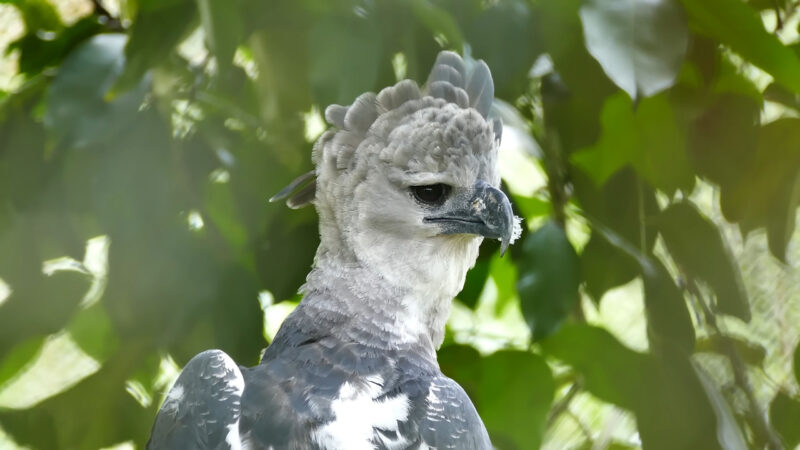
The Harpy Eagle is one of the largest and most powerful raptors in the world. A symbol of Panamanian wildlife, it’s a majestic sight.
Habitat & Behavior
Hunting in the upper canopy, it preys primarily on mammals like monkeys and sloths. Their large talons can exert immense pressure, ensuring a quick kill.
Quick Features
- Wingspan: Up to 7 feet (2.1 meters).
- Diet: Monkeys, sloths, and other tree-dwelling mammals.
- Nesting: Often chooses the tallest trees to build large nests.
7. Agouti
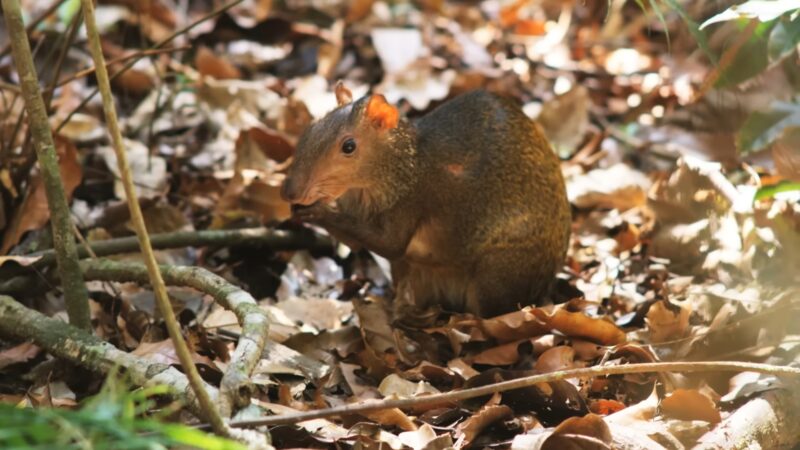
Agoutis, with their slender legs and glossy coats, might initially resemble large guinea pigs. But watch them dash! These agile rodents play a crucial role in the forest ecosystem.
Habitat & Behavior
Often seen scurrying on the forest floor, Agoutis bury seeds, unintentionally aiding in forest regeneration. They have a keen sense of hearing, helping them evade predators.
Quick Features
- Color: Brown to reddish-brown.
- Diet: Seeds, fruits, and plant material.
- Special Skill: Capable of jumping up to 6 feet in the air from a standstill!
8. Ocelot
The Ocelot, a medium-sized wildcat, carries a distinctive spotted coat reminiscent of its larger relatives like the jaguar and leopard.
Habitat & Behavior
Primarily nocturnal, Ocelots are solitary hunters, preferring small mammals and birds. Their stealth and keen senses make them masterful predators of the night.
Quick Features
- Color: Golden-brown with black rosettes and stripes.
- Diet: Rodents, birds, and small mammals.
- Habit: Nocturnal and solitary.
9. Collared Peccary
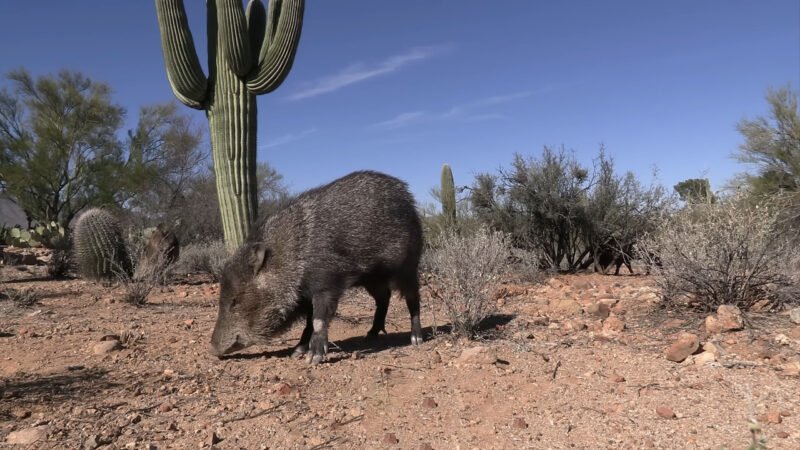
Resembling wild pigs, Collared Peccaries are often heard before they’re seen – grunting and shuffling through the underbrush.
Habitat & Behavior
They form tight-knit groups, constantly on the move in search of food. When threatened, these animals can be quite aggressive, defending their group with tenacity.
Quick Features
- Color: Grayish-black with a white “collar” marking.
- Diet: Fruits, roots, and small animals.
- Social Structure: Highly social, forming groups of up to 15 individuals.
10. Basilisk Lizard
Earning the nickname “Jesus Christ Lizard,” the Basilisk Lizard is famous for its ability to ‘walk’ on water, thanks to its specialized feet.
Habitat & Behavior
Found near water sources, these lizards escape predators by darting across the water’s surface. Their long toes have fringes that create pockets of air, allowing them this almost miraculous feat.
Quick Features
- Color: Olive or brown with stripes or bars.
- Diet: Insects, small vertebrates, and plant material.
- Unique Ability: Can “walk” on the water for short distances.
11. Spectacled Caiman
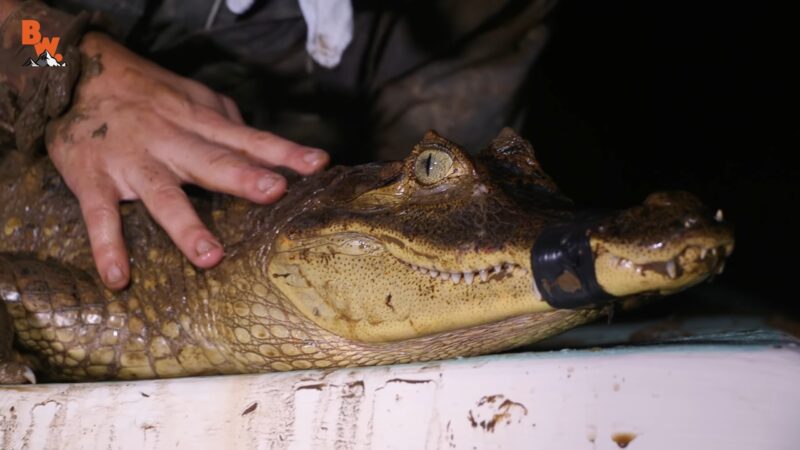
The freshwater wetlands and rivers of Panama provide an ideal home for the Spectacled Caiman, named for the bony ridge between its eyes.
Habitat & Behavior
While smaller than most crocodilians, they are apex predators in their environment. They can often be seen basking in the sun or floating with just their eyes and nostrils above the water.
Quick Features
- Color: Olive-green to gray.
- Diet: Fish, insects, crustaceans, and occasionally small mammals or birds.
- Size: Typically 5-8 feet long (1.5-2.5 meters).
12. Blue Morpho Butterfly
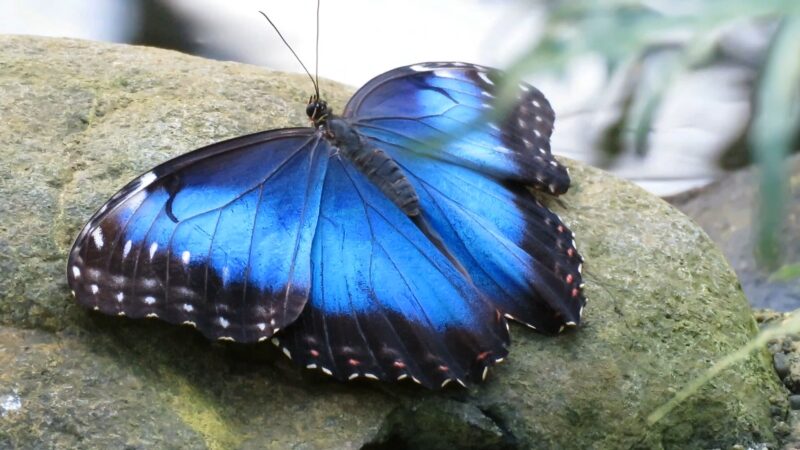
With iridescent blue wings, the Blue Morpho Butterfly is one of Panama’s most iconic insects, creating a mesmerizing sight as it flutters.
Habitat & Behavior
Morphos can be seen dancing through the rainforest, particularly along clearings and river edges. Their dazzling blue is a result of light reflection, not pigmentation!
Quick Features
- Color: Bright iridescent blue on the top, brown with eye spots below.
- Diet: Fermented fruit juices, tree sap.
- Wingspan: Up to 8 inches (20 cm).
13. Red-eyed Tree Frog
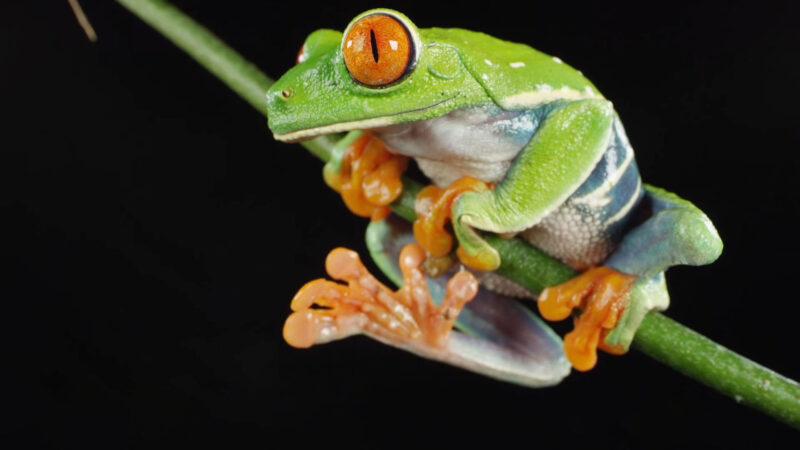
As a poster child for tropical amphibians, the Tree Frog captivates with its striking colors and unmistakable gaze.
Habitat & Behavior
Favoring lowland rainforests, these nocturnal frogs become active once the sun sets. During the day, they remain concealed, using their vibrant underbellies to startle predators when disturbed.
Quick Features
- Color: Bright green with blue streaks and striking red eyes.
- Diet: Insects like crickets and moths.
- Lifespan: Around 5 years in the wild.
14. Baird’s Tapir
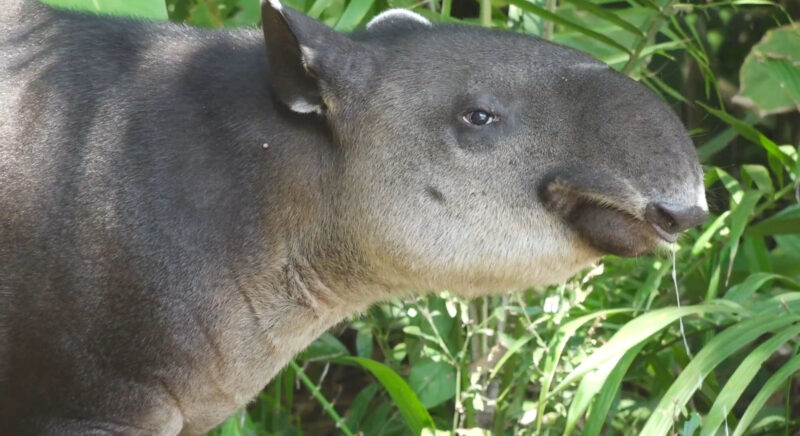
The Baird’s Tapir, the national animal of Panama, resembles a mix between a pig and an elephant, with a distinctive, flexible snout.
Habitat & Behavior
Preferring wet forests and marshy clearings, they’re most active at night, using their snout to pluck leaves, fruits, and aquatic vegetation.
Quick Features
- Color: Dark brown to grayish-black.
- Diet: Leaves, fruits, and aquatic plants.
- Size: Can weigh up to 800 pounds (360 kg).
Things Tourists Must Know About Panama’s Animals Before Visiting

According to Panama Today, before you pack your binoculars and embark on your Panamanian adventure, you should learn about the country’s animals to ensure both your safety and theirs. Here’s a quick guide to help you navigate your wild encounters.
Respecting Habitats: Natural Sanctuaries
Panama’s diverse ecosystems, from cloud forests to coral reefs, are meticulously evolved sanctuaries for its wildlife. As a responsible tourist, always ensure you’re minimizing your ecological footprint.
Stay on marked paths, avoid touching or disturbing animals, and always dispose of waste appropriately. Keeping these sanctuaries pristine ensures that future generations can marvel at Panama’s natural wonders too.
Safety First: Beware of Dangerous Fauna
While Panama is home to a plethora of beautiful creatures, some can be potentially dangerous. Creatures like the Fer-de-lance snake, certain species of spiders, and even some marine animals can pose a threat if provoked or startled.
Arm yourself with knowledge about these species, be cautious, and always maintain a safe distance. If you’re planning on diving or snorkeling, familiarize yourself with local marine life and their potential dangers.
No Flash Photography: For Their Sake and Yours
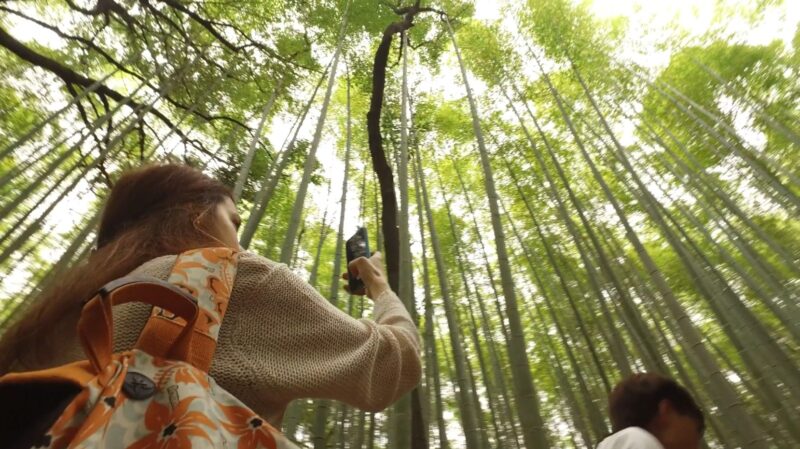
Many tourists might be tempted to capture the vivid colors of Panama’s wildlife using flash photography. However, this can be disruptive and even harmful to many creatures, especially nocturnal animals like the Red-eyed Tree Frog.
Using flash can disorient or scare them, potentially making them easy prey for predators. Always prioritize the well-being of the animals over getting the perfect shot.
Purchasing Souvenirs: Ethical Choices Matter
While shopping for souvenirs, you might come across items made from animal parts, such as feathers, bones, or skins. Before making a purchase, pause and think. Some of these items might be sourced from endangered or protected species. Opt for sustainable and ethical souvenirs that don’t exploit the country’s wildlife.
Guided Tours: A Wise Option
If you’re serious about experiencing Panama’s biodiversity, consider investing in guided tours. Local guides are equipped with extensive knowledge about flora and fauna, ensuring not only that you have an enriching experience but also that interactions are safe and respectful to the environment.
Final Words
From the melodic calls of the toucans to the languid movements of sloths, Panama offers a symphony of natural wonders. It’s a land where biodiversity thrives, and every corner promises a new discovery.
So, the next time you’re thinking of a destination that offers wild encounters, let Panama’s rich tapestry of animals beckon you. Remember, while enjoying the beauty of these creatures, it’s essential to respect their habitats and ensure that our actions promote conservation and understanding.
Related Posts:
- 10 Common Mudpuppy Facts, Pictures & Information
- 7 Common Pet Monkeys: Important Facts & Pictures!
- 20 Slowest Animals in the World - Planet's Most…
- Forest Animals – Pictures & Fun Facts On Animals…
- 6 Most Venomous Snakes in Florida - Lethal Serpents to Avoid
- Dog Breeds on B: Top 42 Most Popular Types - From…


